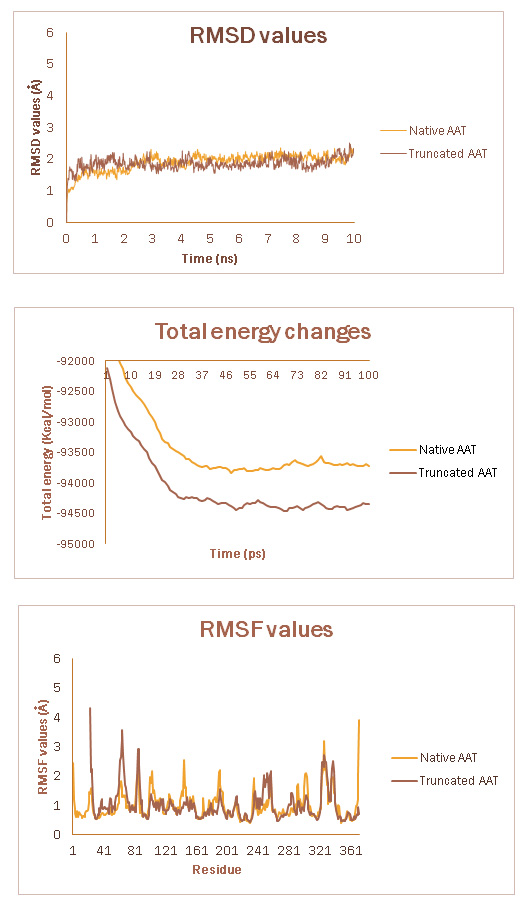Abstract
Background: The elastase inhibitor α-1-antitrypsin (AAT), is a member of the serpin superfamily of protease inhibitors. AAT has a characteristic secondary structure of three-β-sheets, nine-α-helices and a reactive central loop (RCL). This protein inhibits target proteases by forming a stable complex in which the cleaved RCL is inserted into β-sheet-A of the serpin, leading to a conformational change in the AAT protein. Spontaneous polymerization and instability of AAT are challenges with regard to producing drugs against AAT-deficient diseases. Therefore, the purpose of many investigations currently is to produce drugs with lower degrees of polymerization and higher stabilities. In order to investigate the effect of the N-terminal segment (residues 1-43) on AAT structure, molecular dynamic (MD) simulation was used to study structural properties including Root-mean-square deviation (RMSD), internal motions, intramolecular non-bonded interactions and the total accessible surface area (ASA) of native and reduced AAT. These properties were compared in native and truncated AAT. Results: Theoretical studies showed no noticeable differences in the dynamic and structural properties of the two structures. These findings provided the basis for the experimental phase of the study in which sequences from the two AAT constructs were inserted into the expression vector pGAPZ and transformed into Pichia pastoris. Results showed no differences in the activities and polymerization of the two AAT constructs. Conclusions: As small-scale medicines are preferred by lung drug delivery systems, in this study AAT was designed and constructed by decreasing the number of amino acids at the N-terminal region.
Upon acceptance of an article by the journal, authors will be asked to transfer the copyright to Electronic Journal of Biotechnology, which is committed to maintain the electronic access to the journal and to administer a policy of fair control and ensure the widest possible dissemination of the information. The author can use the article for academic purposes, stating clearly the following: "Published in Electronic Journal of Biotechnology at DOI:10.2225/volXX-issueX-fulltext-XX".
The Copyright Transfer Agreement must be submitted as a signed scanned copy to biotec@ucv.cl. All authors must send a copy of this document.
